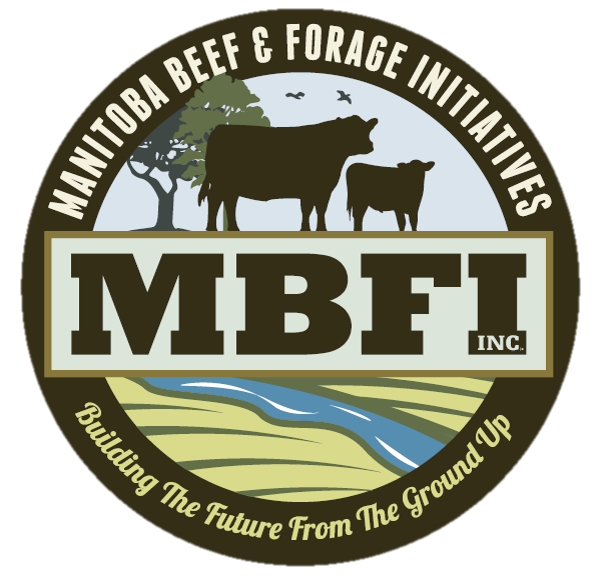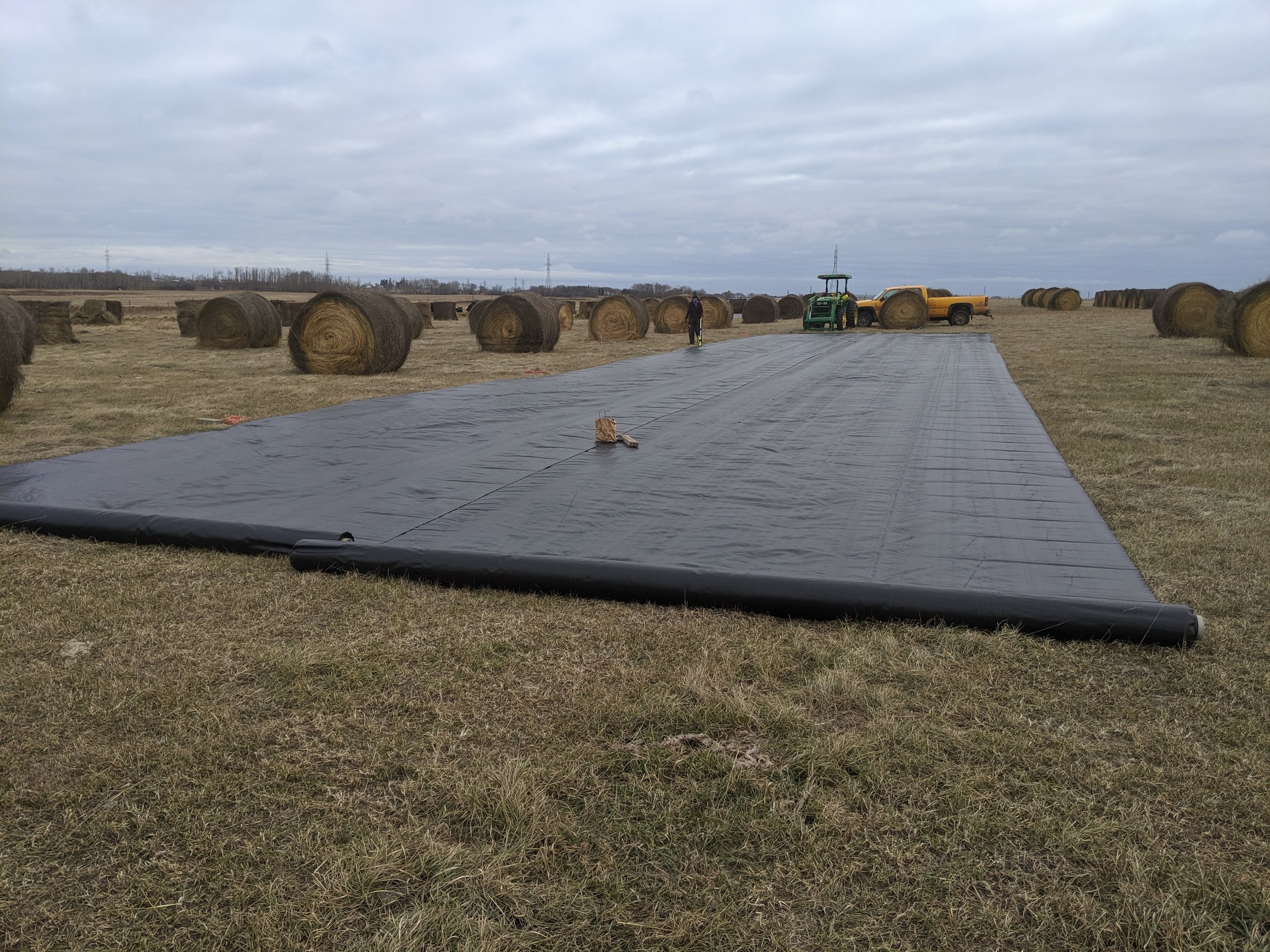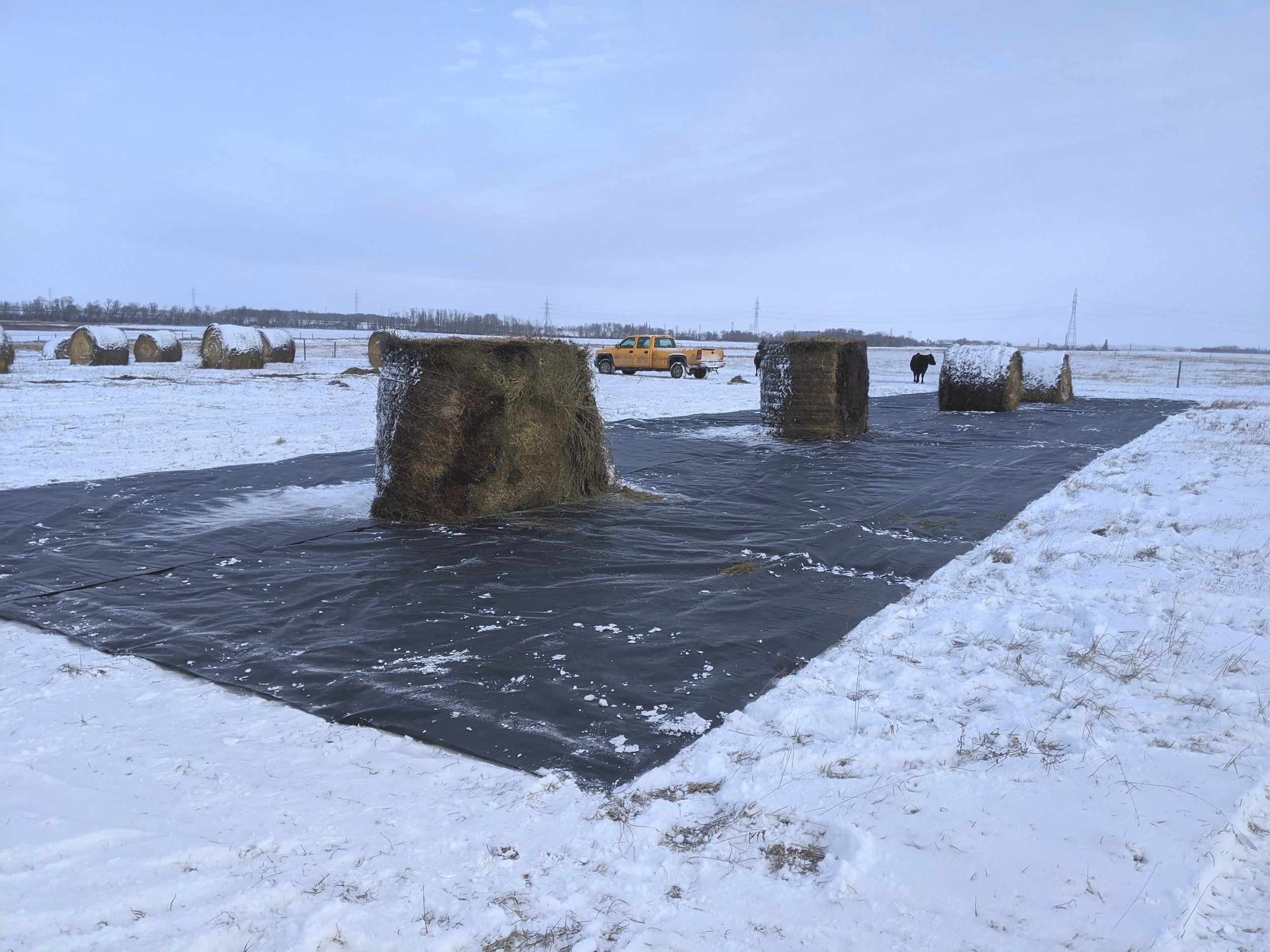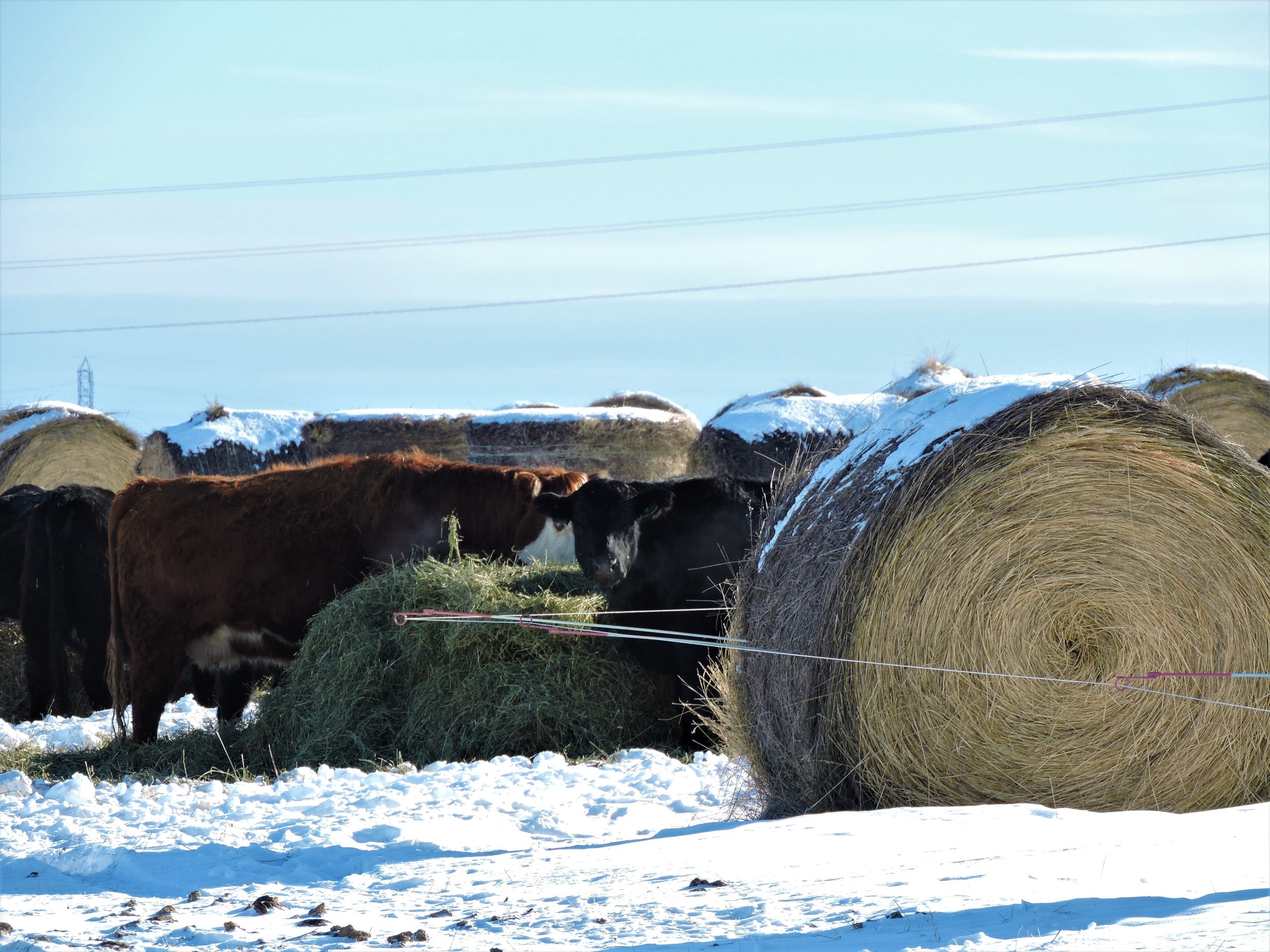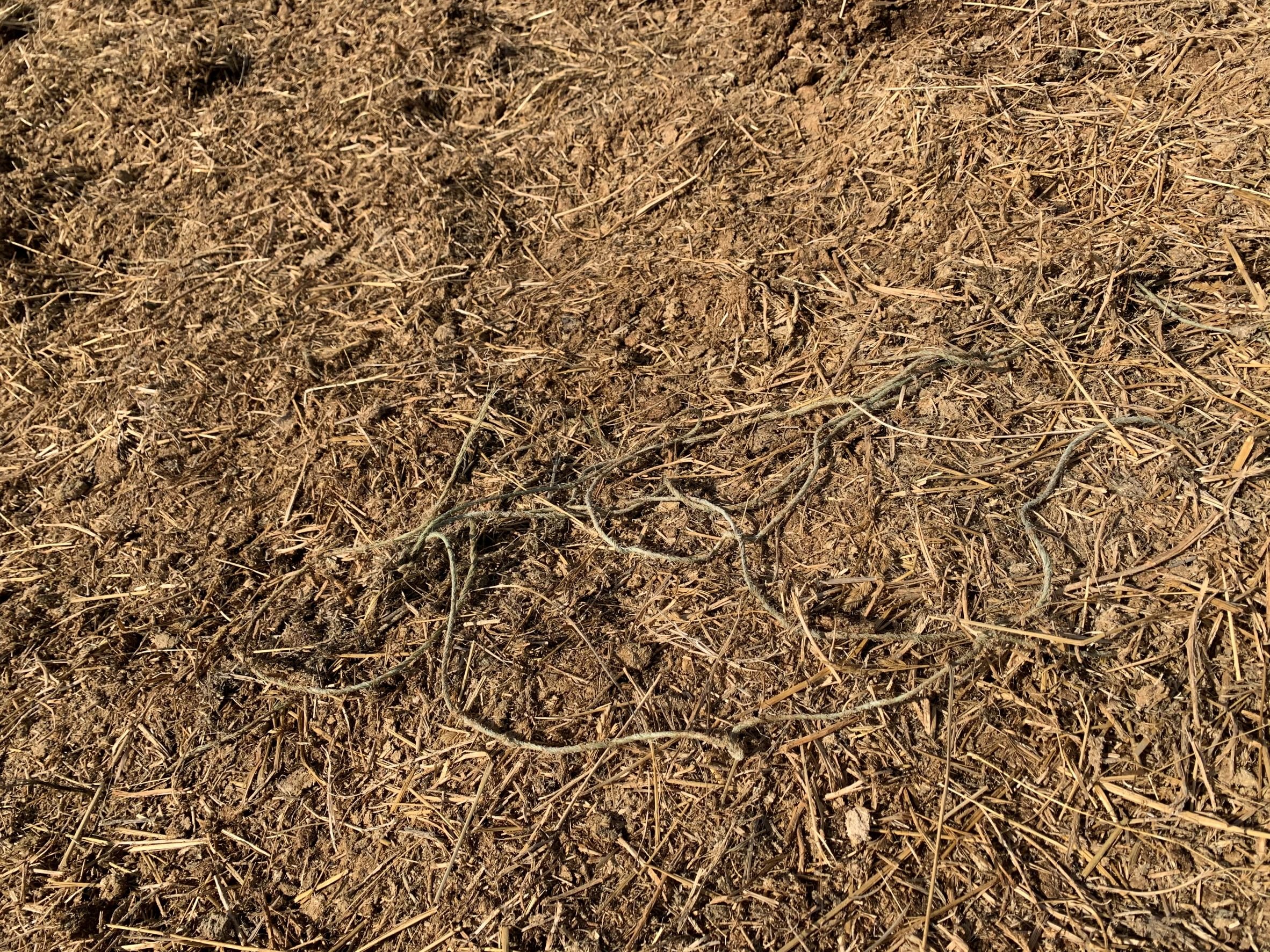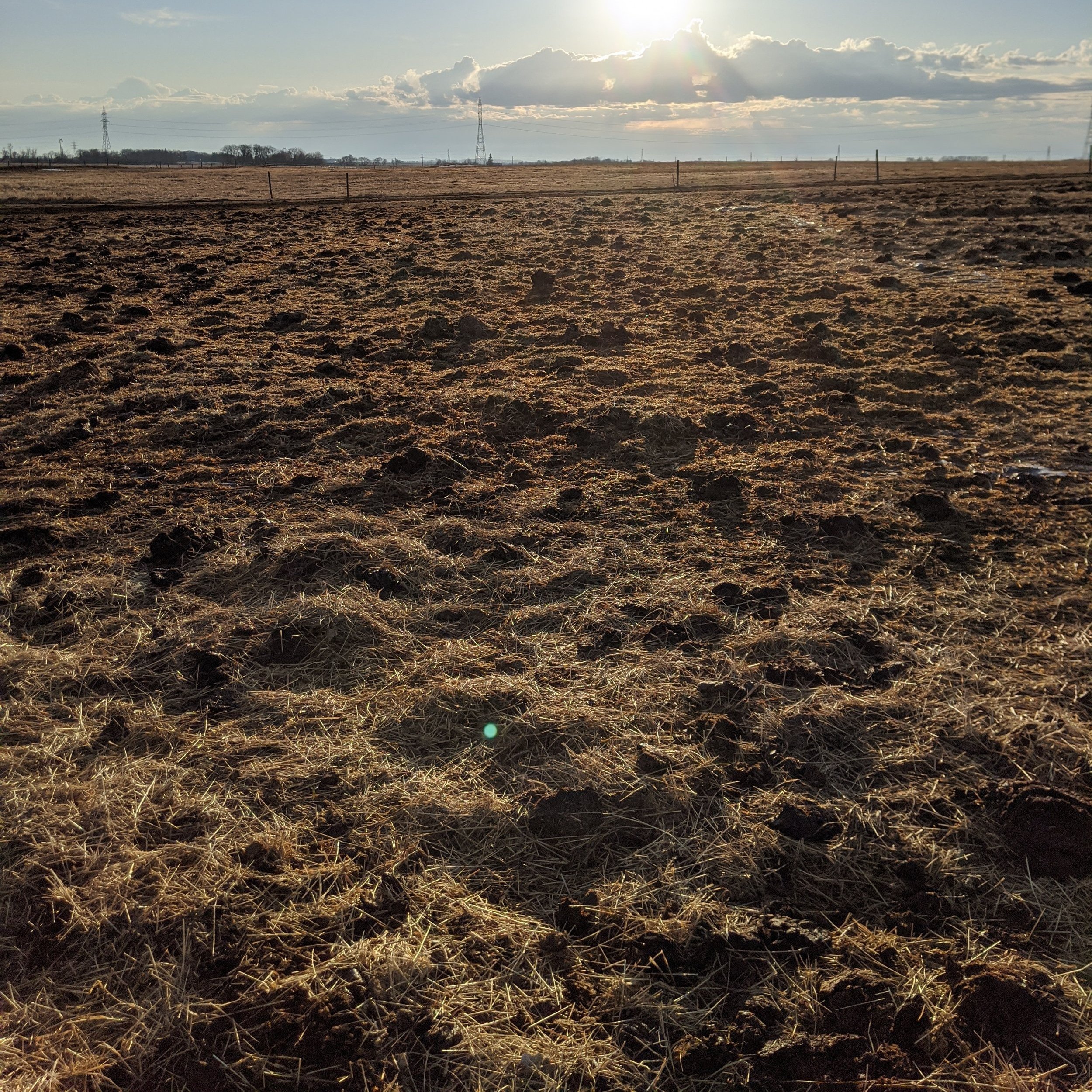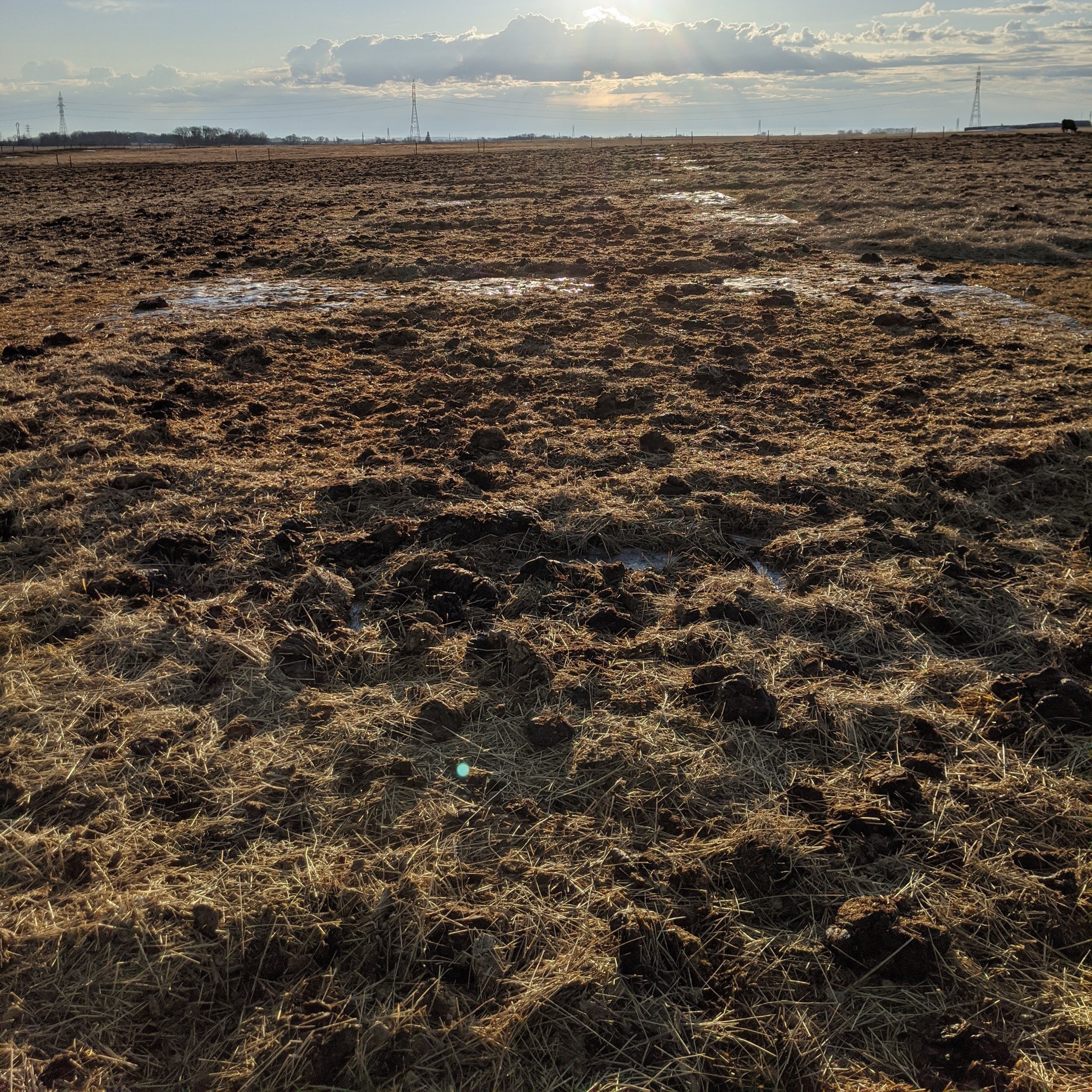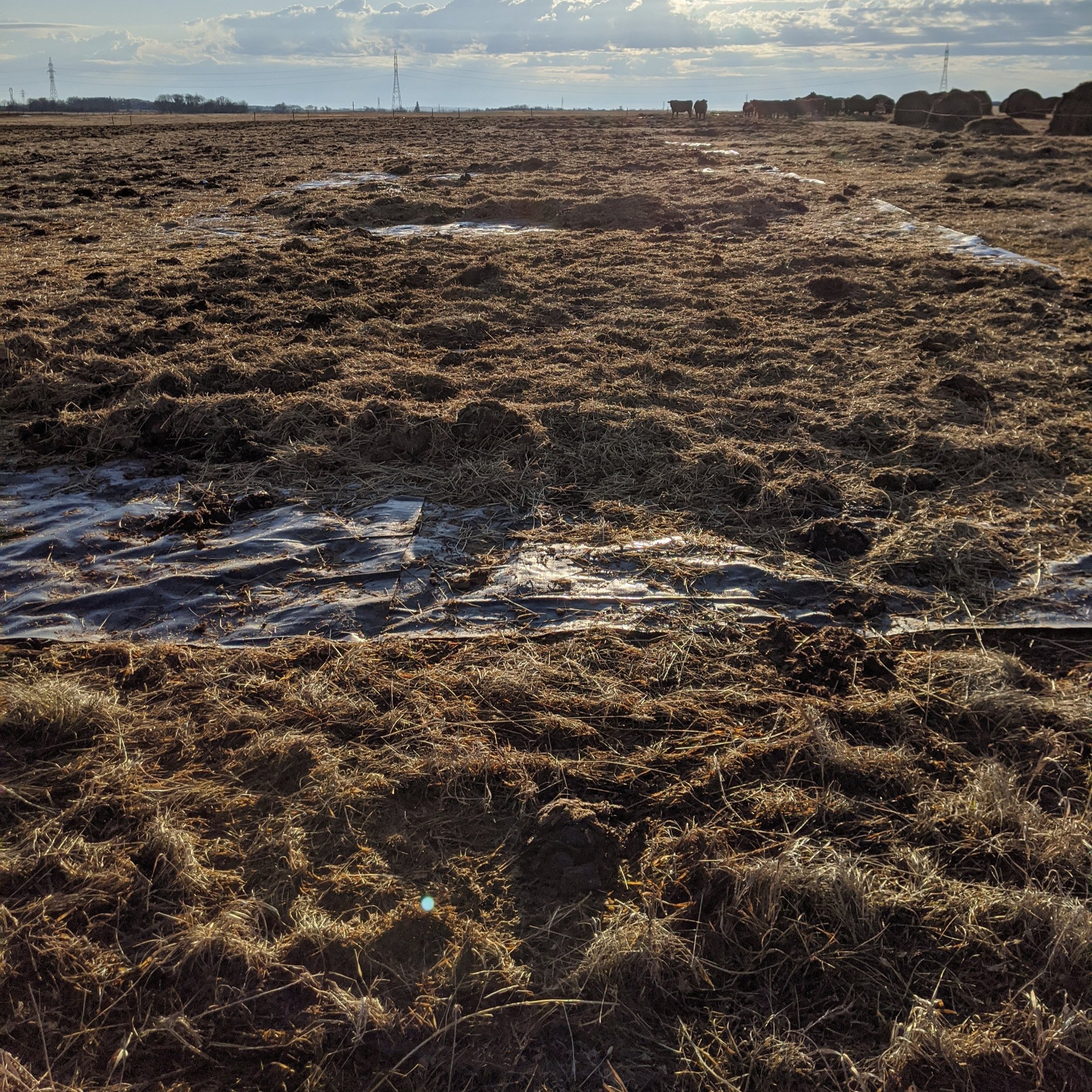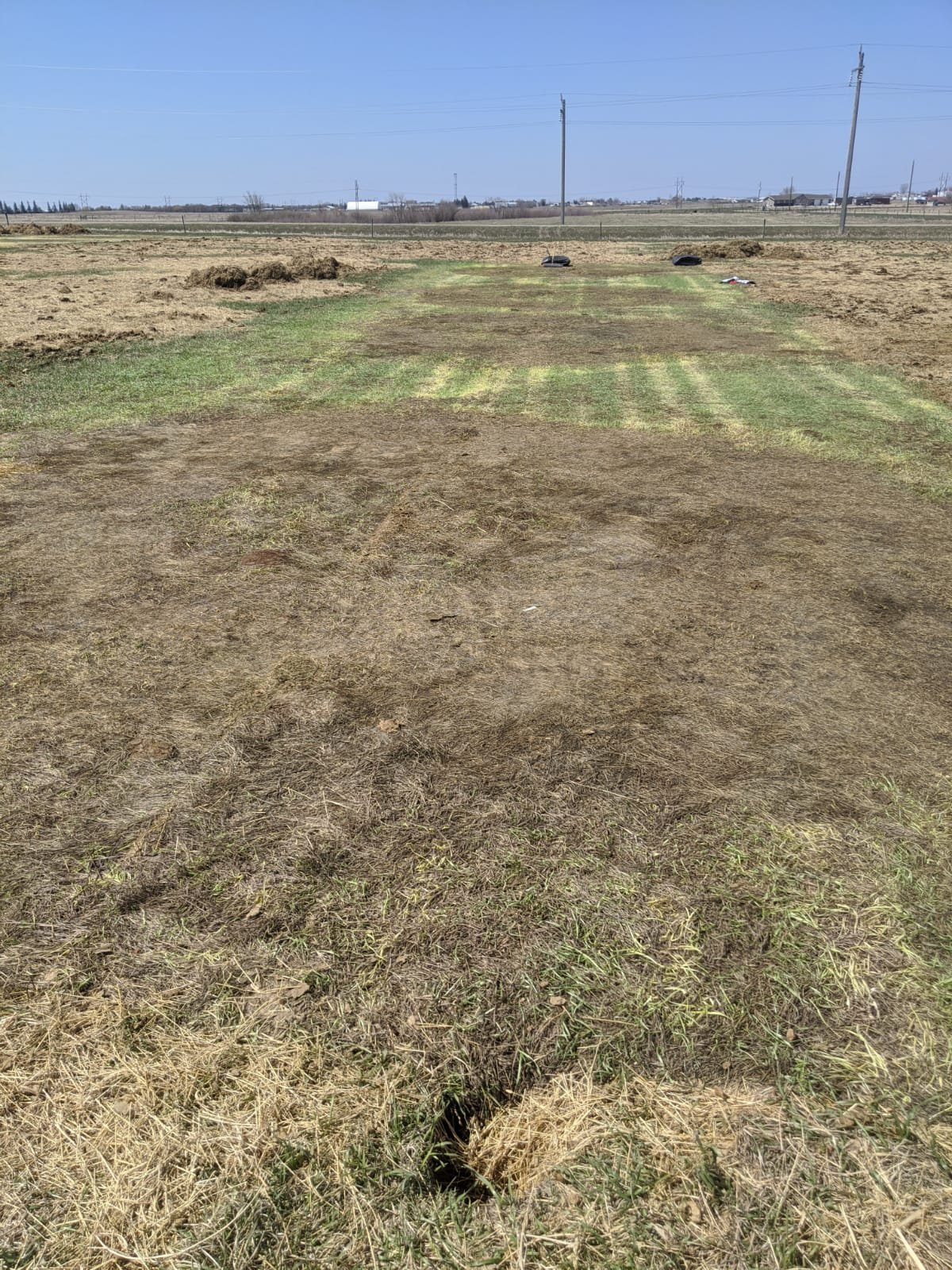Back to Research & Demonstration
Effects of bale placement and binding material on grazing residue
Project Details
Project Lead: MBFI Staff
Years: 2019-2020
Project Status: Complete
Funding & In-Kind Support: Canadian Agricultural Partnership,
Location: Johnson Farm
Scope: Demonstration
Keywords: Extended Grazing
Approach
This demonstration compares two different bale placements, side placement and end placement, and two binding materials, plastic twine and sisal twine, in a bale grazing system.
Key Findings
Bale placement: There was very little residue difference between side and end placement for either twine types. Limiting bale allocation to three days may minimize residue.
Binding material: There was little difference in bale residue between the four different bale grazing treatments , suggesting bale placement and binding method has little effect on residue amounts left over after bale grazing. Cows were not observed to have preferences while utilizing the bales.
Cost of production: Between twine costs and labour costs, plastic twine bales cost $0.15 more per bale than sisal twine bales.
On average, cows consumed the same percent of the sisal twine bales as the plastic twine bales. The higher cost for the plastic twine bales did not correspond to a higher percent of the bale consumed.
Bale residue as a percent of original bale mass by bale placement and binding treatment.
Cost of production between sisal and plastic twine bales.
Full Reports:
Related Projects at MBFI:
Industry Resources:
Bale Grazing Wastage Estimation - Lakeland Agricultural Research Association
Extended Grazing - Beef Cattle Research Council
Pros And Cons Of Plastic, Sisal And Net Wrap For Bale Grazing - Canadian Cattlemen
